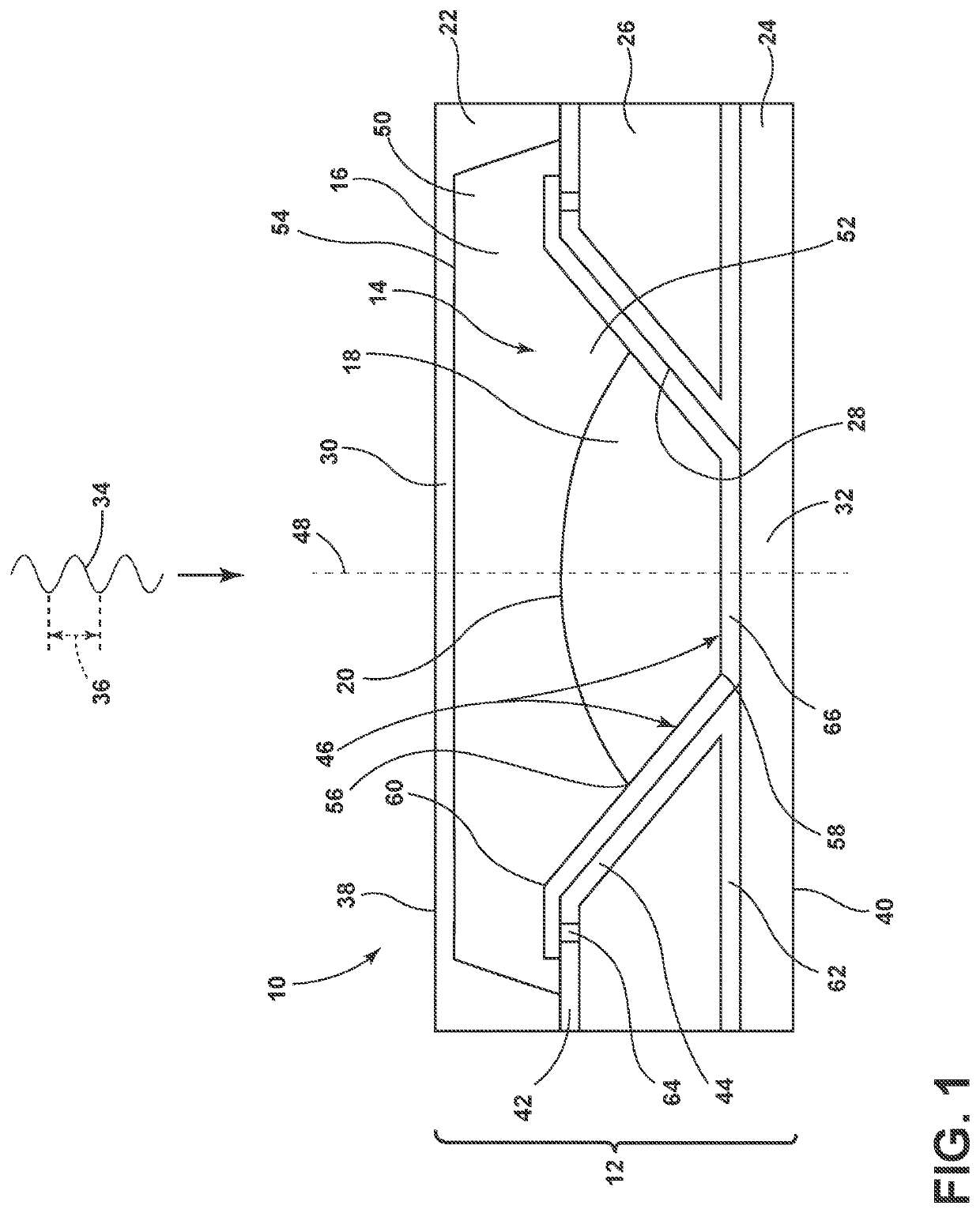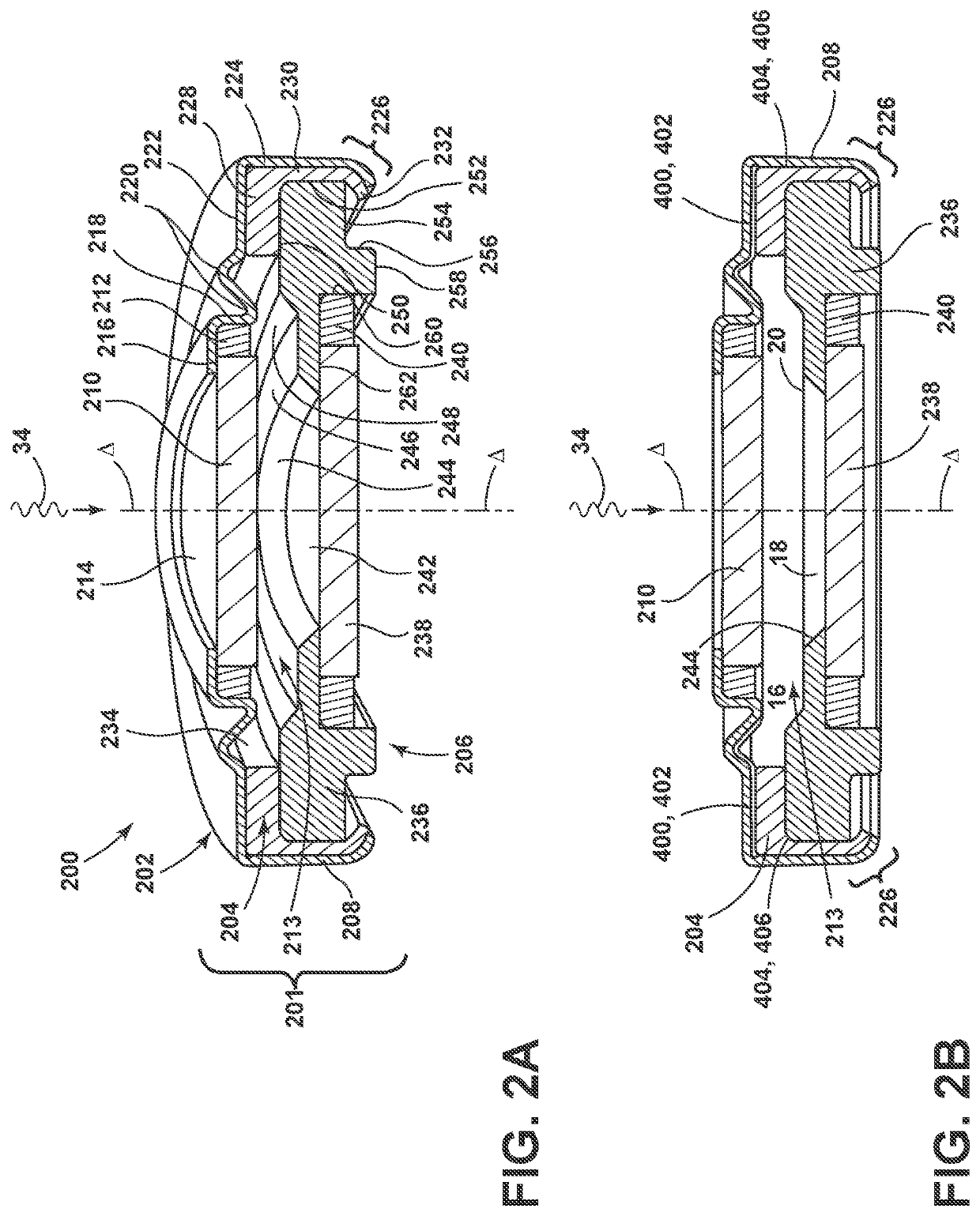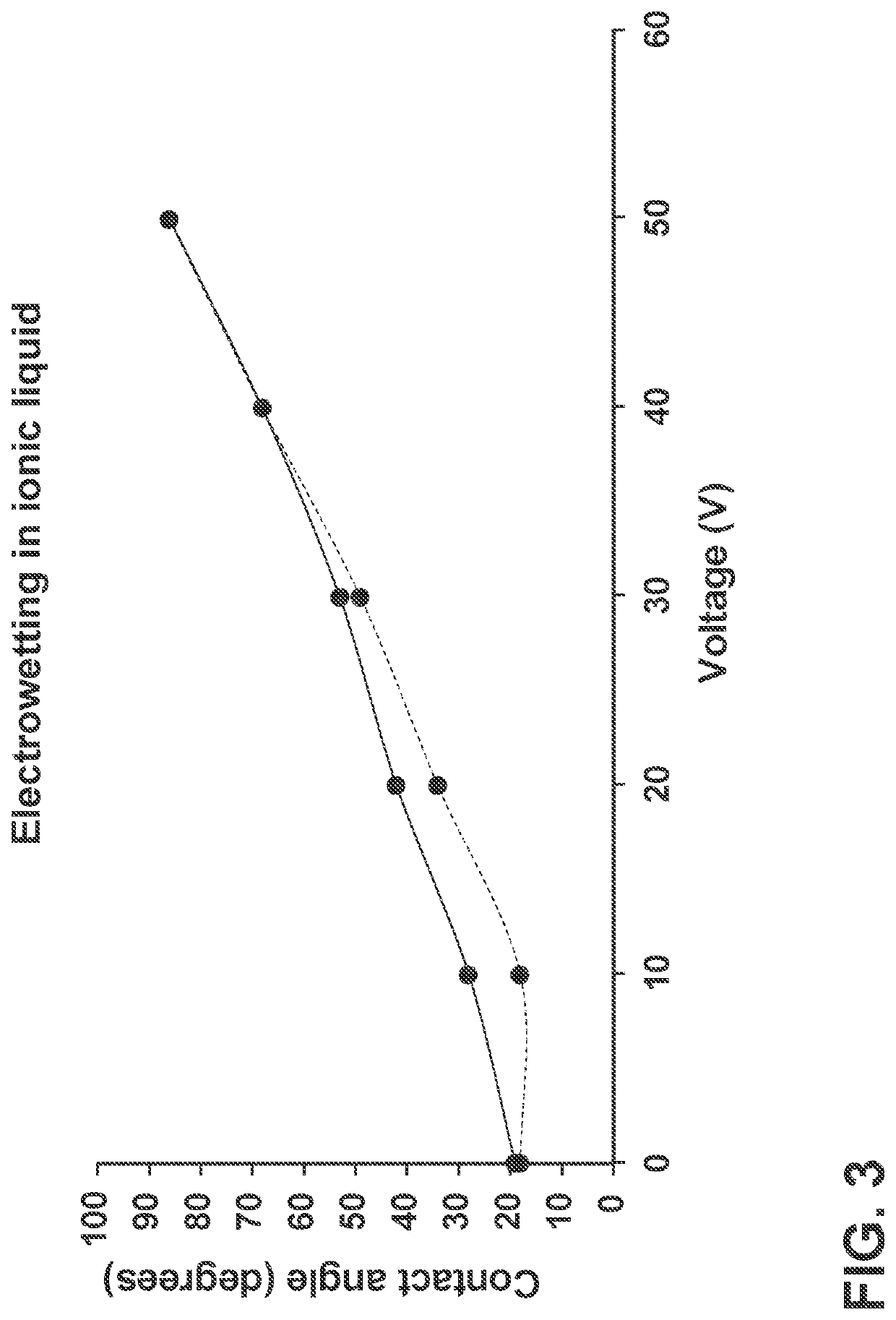Low melting point ionic liquids for infra-red liquid lens design
a liquid lens and low melting point technology, applied in the field of liquid lens design, can solve the problems of unsuitable liquid lens for intended applications, and achieve the effect of convenient pairing
- Summary
- Abstract
- Description
- Claims
- Application Information
AI Technical Summary
Benefits of technology
Problems solved by technology
Method used
Image
Examples
example 1
[0094]In the formulation of Example 1, the conducting liquid 16 is 100 percent by weight 1-ethyl-3-methylimidazolium dicyanamide. The insulating liquid 18 includes dodecane, (25-35% nonafluorohexylmethylsiloxane) (65-75% dimethylsiloxane) copolymer, bis(nonafluorohexyl)tetramethyldisiloxane, and polydimethylsiloxane. Note that the densities of the conducting liquid 16 and the insulating liquid 18 match.
Conducting liquid 16Insulating liquid 18% by% byweightcompoundweightcompound100%1-ethyl-3-12%dodecanemethylimidazoliumdicyanamide63%(25-35%nonafluorohexylmethylsiloxane)(65-75% dimethylsiloxane)copolymer15%bis(nonafluorohexyl)-tetramethyldisiloxane10%polydimethylsiloxaneDensity (20° C.): 1.104 g / cm3Density (20° C.): 1.104 g / cm3Viscosity (20° C.): 14.9 cStViscosity (20° C.): 4.6 cStIndex (589 nm, 20° C.): 1.516Index (589 nm, 20° C.): 1.375
example 2
[0095]In the formulation of Example 2, the conducting liquid 16 is 100 percent by weight 1-butyl-1-methylpyrrolidinium tricyanomethanide. The insulating liquid 18 includes dodecane, (25-35% nonafluorohexylmethylsiloxane) (65-75% dimethylsiloxane) copolymer, bis(nonafluorohexyl)tetramethyldisiloxane, and polydimethylsiloxane. Note that the densities of the conducting liquid 16 and the insulating 18 match to within 0.001 g / cm3.
Conducting liquid 16Insulating liquid 18% by% byweightcompoundweightcompound100%1-butyl-1-30%dodecanemethylpyrrolidiniumtricyanomethanide20%(25-35%nonafluorohexylmethylsiloxane)(65-75% dimethylsiloxane)copolymer20%bis(nonafluorohexyl)-tetramethyldisiloxane30%polydimethylsiloxaneDensity (20° C.): 1.010 g / cm3Density (20° C.): 1.011 g / cm3Viscosity (20° C.): 34.4 cStViscosity (20° C.): 3.7 cStIndex (589 nm, 20° C.): 1.499Index (589 nm, 20° C.): 1.387
example 3
[0096]In the formulation of Example 3, the conducting liquid 16 includes 1-ethyl-3-methylimidazolium tricyanomethanide and γ-butyrolactone. The insulating liquid 18 includes dodecane, (25-35% nonafluorohexylmethylsiloxane) (65-75% dimethylsiloxane) copolymer, bis(nonafluorohexyl)tetramethyldisiloxane, and polydimethylsiloxane. Note that the densities of the conducting liquid 16 and the insulating 18 match to within 0.005 g / cm3.
Conducting liquid 16Insulating liquid 18% by% byweightcompoundweightcompound80%1-ethyl-3-15%dodecanemethylimidazoliumtricyanomethanide20%γ-butyrolactone15%(25-35%nonafluorohexylmethylsiloxane)(65-75% dimethylsiloxane)copolymer60%bis(nonafluorohexyl)-tetramethyldisiloxane10%polydimethylsiloxaneDensity (20° C.): 1.095 g / cm3Density (20° C.): 1.090 g / cm3Viscosity (20° C.): 9.2 cStViscosity (20° C.): 4.2 cStIndex (589 nm, 20° C.): 1.500Index (589 nm, 20° C.): 1.378
[0097]Referring now to FIG. 5, the formulation example 1 above was tested to determine transmissivity ...
PUM
| Property | Measurement | Unit |
|---|---|---|
| thickness | aaaaa | aaaaa |
| thickness | aaaaa | aaaaa |
| transmittance | aaaaa | aaaaa |
Abstract
Description
Claims
Application Information
 Login to View More
Login to View More - Generate Ideas
- Intellectual Property
- Life Sciences
- Materials
- Tech Scout
- Unparalleled Data Quality
- Higher Quality Content
- 60% Fewer Hallucinations
Browse by: Latest US Patents, China's latest patents, Technical Efficacy Thesaurus, Application Domain, Technology Topic, Popular Technical Reports.
© 2025 PatSnap. All rights reserved.Legal|Privacy policy|Modern Slavery Act Transparency Statement|Sitemap|About US| Contact US: help@patsnap.com



